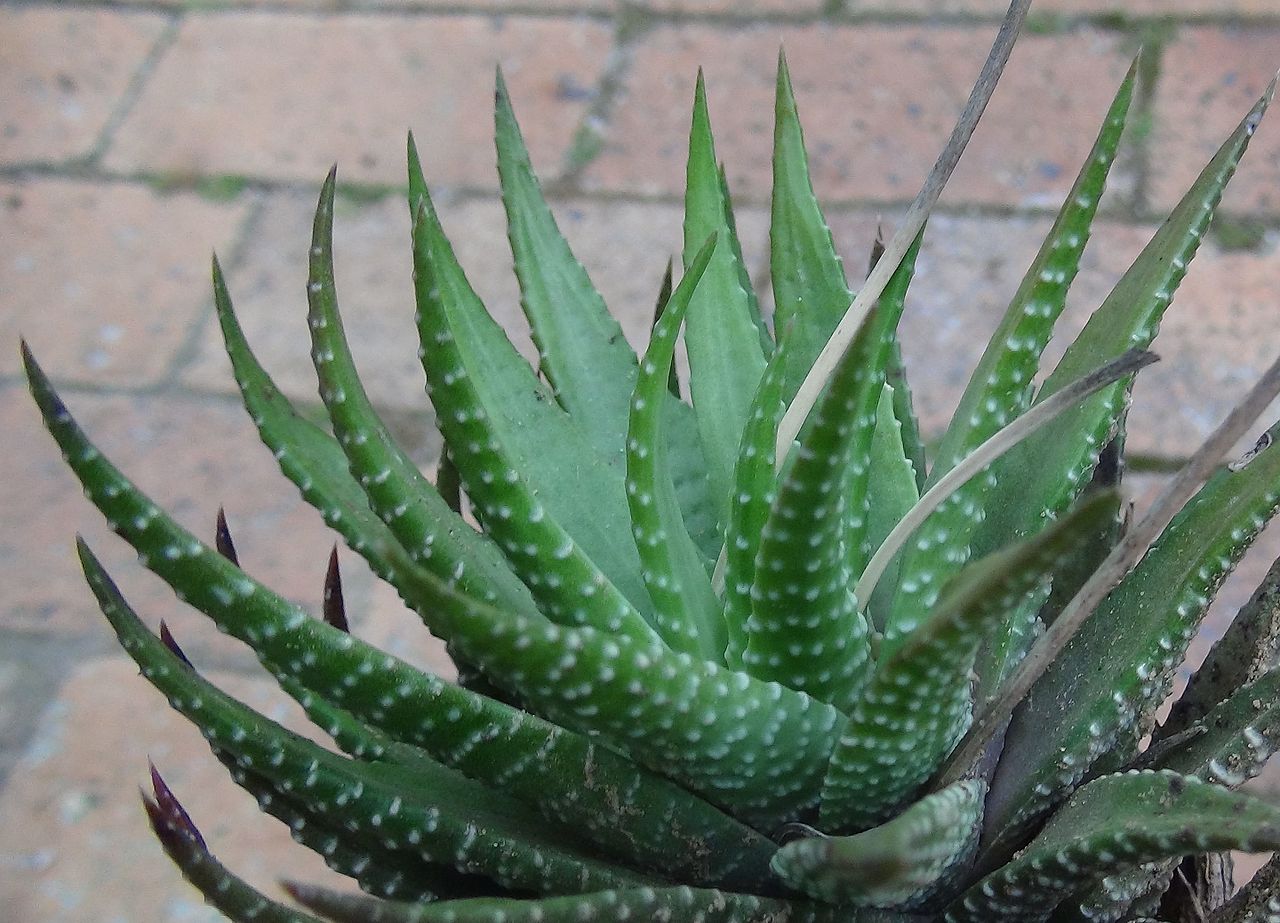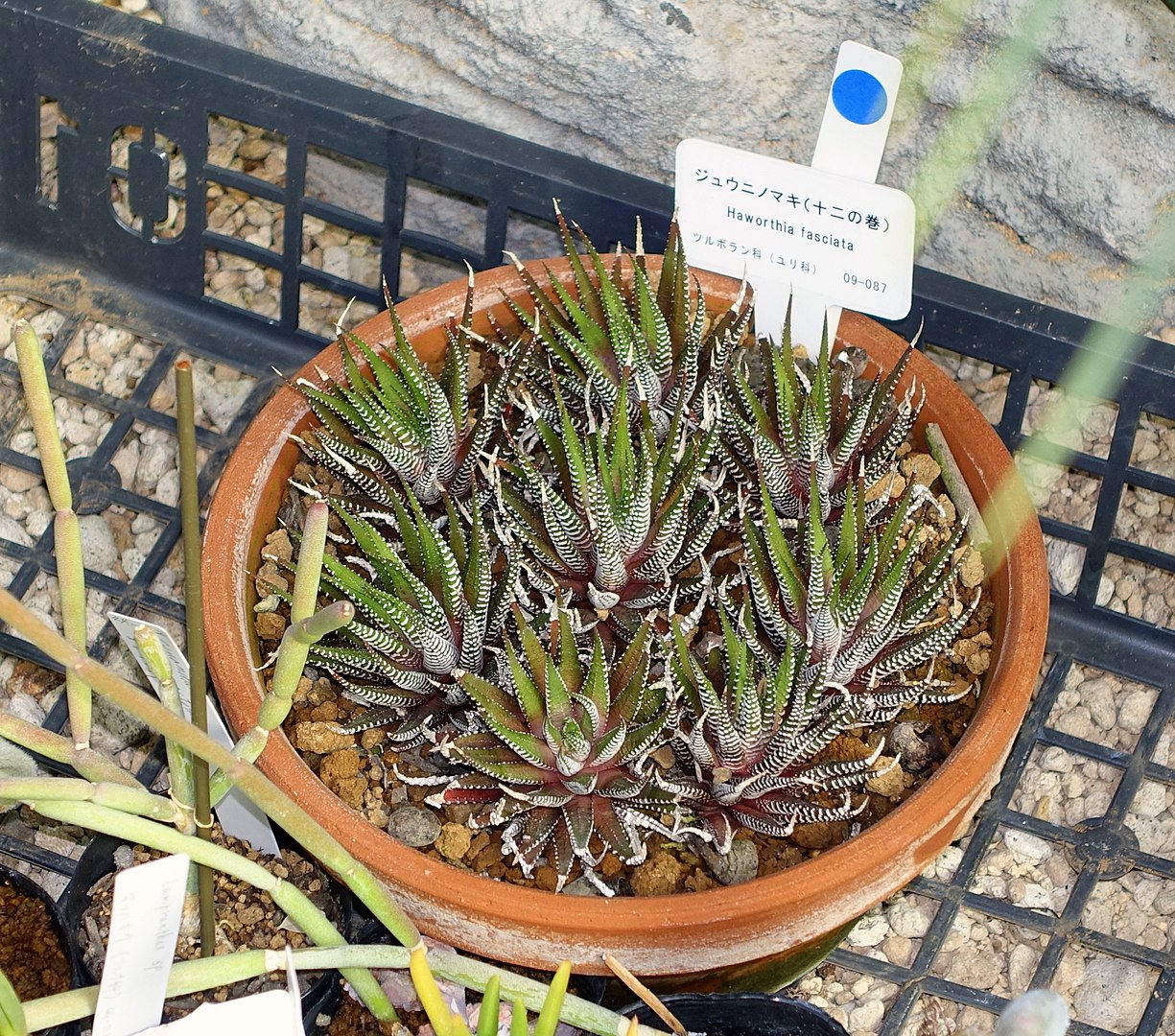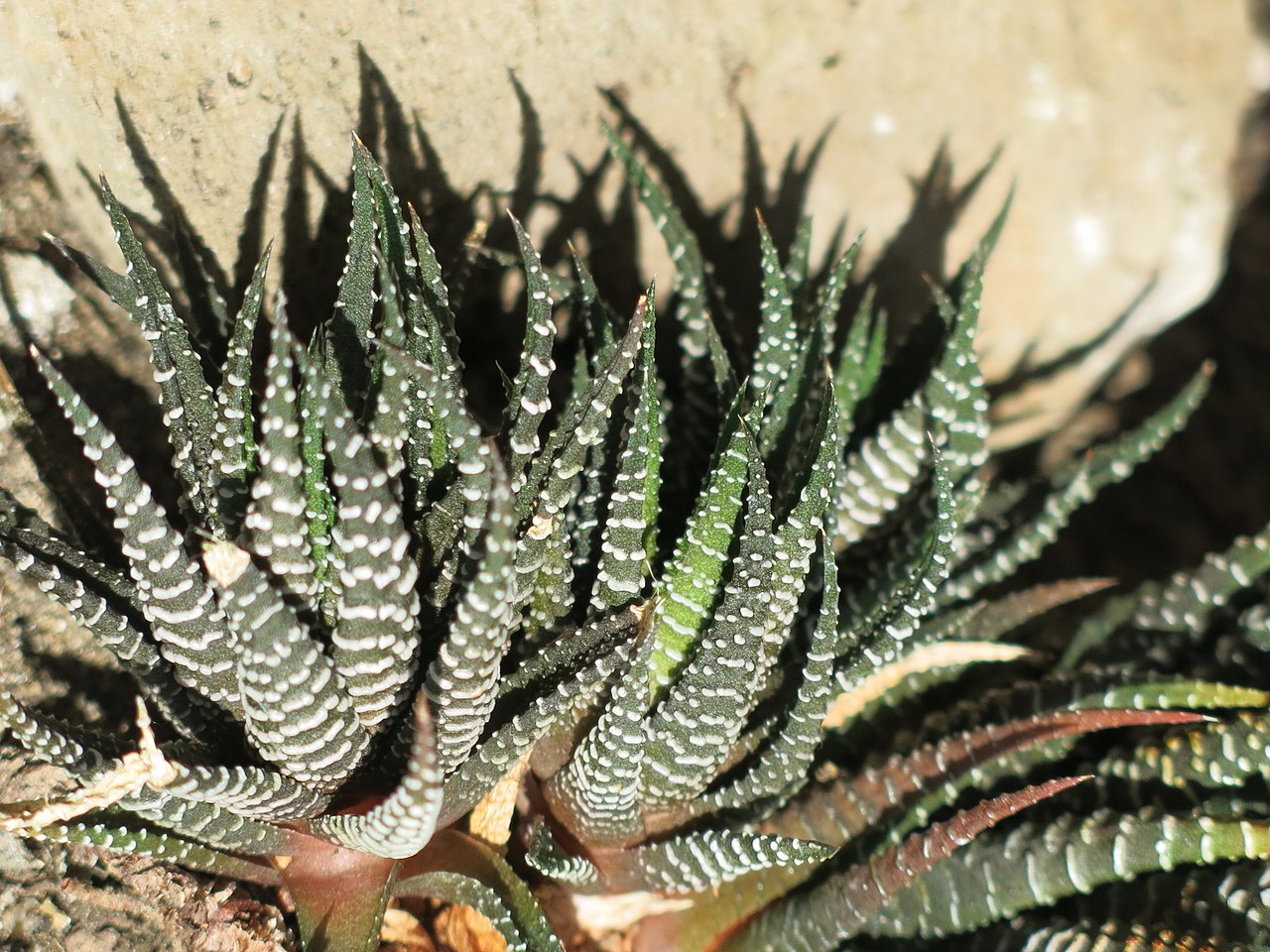
Image - Wikimedia / Abu Shawka
La haworthia fasciata It is one of the first species of succulents of which a specimen is usually bought when starting a collection, or when looking for a small plant to have on a table or on the terrace.
It is very easy to take care of. So much so that I would dare to say that it is one of the best to start in the succulent world. In addition, not only will you have to worry little about watering, but if you wanted, you could separate your children and have many little plants.
Origin and characteristics of haworthia fasciata

Image - Wikimedia / Abu Shawka
La haworthia fasciata it is a crass or non-cactus succulent plant endemic to South Africa. Forms rosettes of triangular dark-green leaves with many crested white spots on the underside and less on the upper. There is a thorn on the tip of each leaf, but it is harmless as it is not sharp. The total height does not exceed ten-fifteen centimeters.
Blooms in spring, producing a long flower stalk that can measure up to 40 centimeters. At the eastern end, several small flowers appear, white with light reddish-brown lines. The fruit is a type of dry capsule, very small, inside which we will find the seeds.
Many suckers tend to sprout, so many that get to form groups that, although I am not very big, they do force you to plant it in a wide pot, about a foot in diameter.
What are the care you need?
If you dare to have a copy, we recommend you take care of it as follows. Thus, the risk of unforeseen events will be lower 🙂:
Location
- Body exterior:: since it is a plant that resists high temperatures and even some frosts, the ideal would be to have it all year round (or at least in spring and summer) outside the home, in semi-shade.
- Interior: It may be inside the house, but the room in which it is placed must be very clear. Also, it should be away from drafts, and a little away from windows.
Irrigation
In order not to take unnecessary risks, the soil or substrate must be allowed to dry completely before watering again. Keep in mind that in case of problems, it will always be easier to recover a plant that has suffered thirst, than one that has been drowning, especially when it comes to succulents.
That is why, if you have doubts, you should check the humidity of the soil or the substrate, either by inserting a stick or, if you have it in a pot, weighing it once watered and again after a few days. On the other hand, it is advisable not to put a plate under it, because if the roots are always in contact with stagnant water, they will rot ... and with them the leaves.
Earth

- Flower pot: mix universal substrate with perlite in equal parts. In case of living in a humid place (either due to rain, living on an island and / or being near the coast), use coarse sand, type pumice better (for sale here) or akadama.
- Garden: the soil must be rather limestone, and have good drainage. It grows on stony ones as long as it has some soil to root.
Subscriber
In order to grow healthy, can be fertilized with a succulent compost from early spring to late summer. If you live in an area where the climate is mild, without frosts or very mild, you can fertilize until autumn.
Of course, you have to follow the instructions that will be specified on the package to the letter, otherwise you could cause damage by overdose of fertilizer.
Planting or transplanting time
La haworthia fasciata it can be planted in the garden or changed pot in spring. But taking into account that it is a rather small plant that tends to produce suckers, we recommend the following:
- Garden: put in an area a little separate from what is the garden itself, as in a planter with other succulents.
- Flower pot: 2, maybe 3 transplants will be needed throughout your life. You can even leave for example 3 (the mother plant with two children) in one and plant the other suckers in other pots.
Multiplication
It multiplies by seeds and separation of suckers in spring-summer.
Seeds
The seeds they should be sown in low but wide trays, with universal substrate mixed with perlite in equal parts, and ensuring that they are a little separated from each other.
Afterwards, the seedbed is placed outside, in semi-shade, and it is kept watered. In about 15 days or so, they will germinate. But it is important that you know that it hybridizes very easily with other Haworthia species, something that makes it a bit difficult to get specimens of H fasciata cigars.
Separation of suckers
The suckers can be separated from the mother plant when they are about 3-4 centimeters tall. Digging into the ground a bit you will pull them out by the roots, and then you just have to plant them in other pots, in semi-shade.
Plagues and diseases
It is quite resistant, but you have to watch the mealybugs and snails. As it is a small plant, if you see a bug it will be easy to remove with a brush.
Another option is to use ecological insecticides, such as diatomaceous earth, which also serves as a soft compost. Sprinkle a little around, and voila.
Rusticity
La haworthia fasciata withstands frosts down to -2ºC, maybe up to -3ºC if it is for a short time. But it is preferable that it does not drop below 0 degrees.
Where to buy?

Get your plant from here.
What did you think of this succulent?
Excellent article. They gave me one and wanted to ask about it. The note is very complete. Thanks!!!
Great, thanks to you.